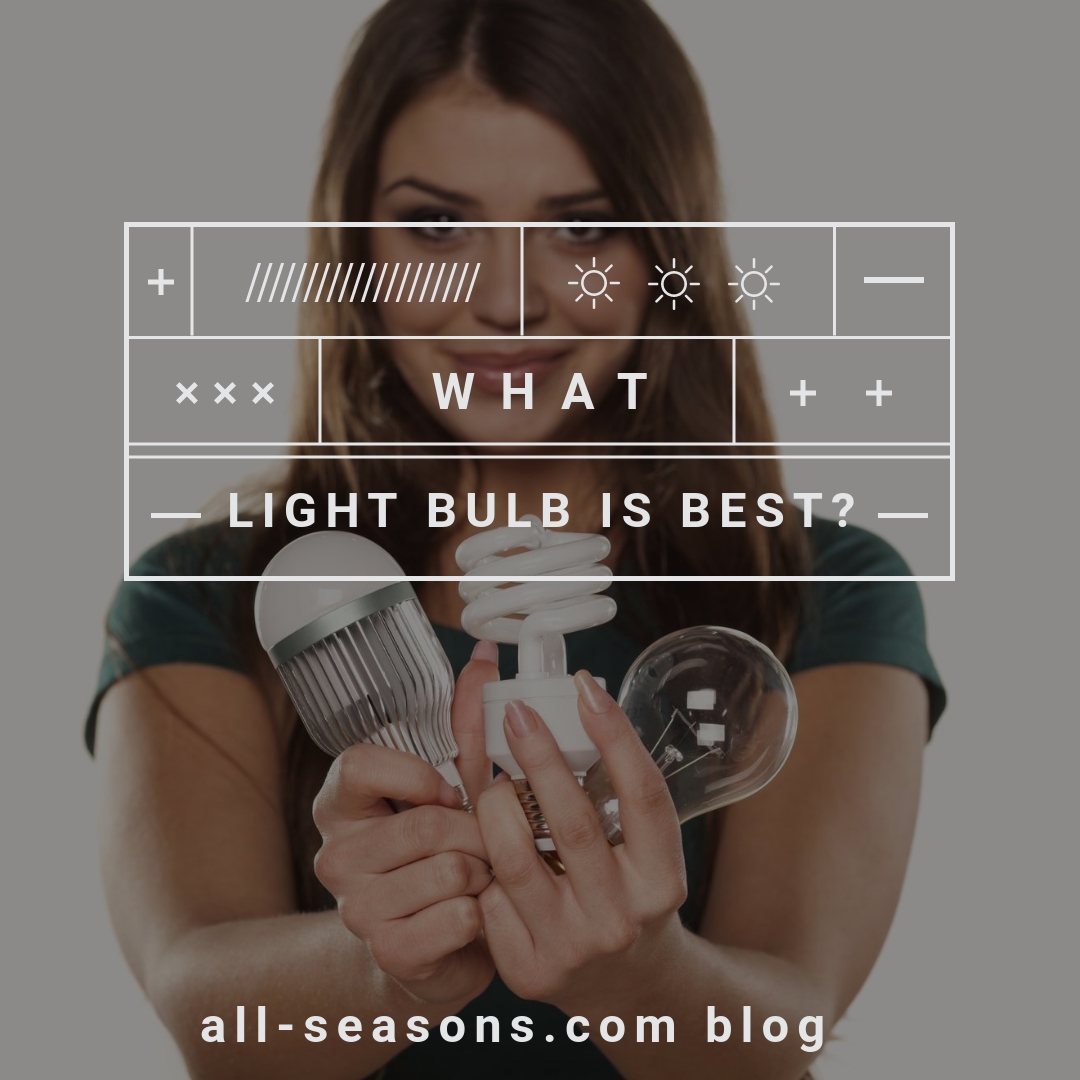What Light Bulb is Best?
Lighting in our homes has changed as our technology changes. With several choices in light bulbs available on the market now, it's important to know what light bulb is best for you.
Incandescent Bulbs
Incandescent bulbs are the traditional bulbs found in homes for years. These bulbs use electrical current to create heat in the metal filament, which produces light when brought up to an incandescent temperature.
Since light fixtures were made with these bulbs in mind, they fit everywhere. There are many different wattages, colors, and shapes. Because of their design, though, they can be hot enough to burn when touched, or cause fires if placed too closely to flammable material. Their thin glass breaks extremely easily. They are also much more expensive to use than LED or CFL bulbs.
Compact Fluorescent Lights (CFLs)
Using only about 20% of that used by the incandescent alternative, CFL bulbs became a thrifty alternative in the early 2000s. Although they had a twisty-tubular design, they caught on fast as a “green” bulb. Until it became general knowledge that they were made with mercury and had to be disposed of carefully. GE announced they would stop producing them in 2016, but they can still be bought in stores.
The light from these bulbs can be unpleasant, and even gives some people headaches. Because of the chemical danger a broken CFL bulb can cause, All Seasons does not allow these bulbs to be used in our homes. For more information about this, please call your Property Manager.
Light Emitting Diodes (LEDs)
LED light was first discovered in 1907 and put to use in 1972 as the indicator light in electronics. The main thing keeping them from use was the cost of production, which has mainly been solved. But even today, they are more expensive to buy, although stores like Amazon sell them for a little as $14.00 for 6 bulbs.
LED light is not produced from heat, so the energy savings is 90% over incandescent bulbs. Smaller wattage means less electricity is needed to produce the same amount of light. Because no dangerous chemicals are used, the LED lights are much safer than CFL bulbs.
One of the main advantages of LED bulbs is their long lifetime. They can last up to 40,000 hours of use, quickly paying for themselves in saved utility costs.
A new feature of LED bulbs is their ability to be used as smart bulbs. Their electronic design lends control to the bulb itself through internal WiFi, instead of having to control the power outlet to turn the bulb on and off.
More than just on and off control, though, comes with these bulbs. A smartphone or hub can control their color, timing, and some have Bluetooth speakers built-in. You can schedule lights to come on while you’re on vacation.
Here are some of the pros and cons of LED bulbs.
Pros:
- they emit more light per watt than incandescent lamps
- they are much smaller
- their on/off time is much shorter than of the other types of electric light sources (they are quick)
- their lifetime is much longer
- they are much more difficult to damage
Cons:
- high price per lumen
- limited light spectrum
- high dependence of the outside temperature
- easy overheating if the outside temperature is too high and there is no heat sink
All Seasons Bulb Policy
Incandescent bulbs have always been allowed in All Seasons homes. CFL light bulbs are not allowed, due to the mercury content in them and risk of mercury exposure to the Resident if they were to break.
LED bulbs are now allowed and encouraged! If you would like to talk to All Seasons about swapping out your incandescent bulbs for the LED alternative, call our office at: (719) 632-3368, and speak with your Property Manager.
Read More
See some LED bulb purchase options at: https://amzn.to/2ABxCQe
Read more about smart LED bulbs at: https://bit.ly/2lSmuHE















